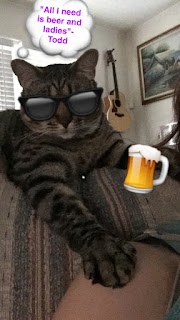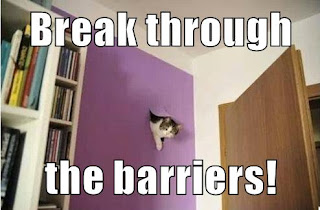Reading Notes: Aesop for Children (Winter), Part B
For the second part of this week's reading assignment I chose to stick with The Aesop for Children (Winter) As I mentioned before, one of the main characteristics to these stories is their meaning or moral at the end of every story. An interesting feature to these stories is that, for the most part, I am able to deduce what the moral of the story is before actually getting to the end where you find the answer. To me, this shows that the author's ideas were well thought out, which is a great skill set to have when creating a story.
Something that I have yet to try is to make a story that sits a little closer, maybe too close, to reality. I enjoy the fact that these are stories for children; However, this only makes me want to re-create them into something more suitable for adults, i.e., turning one into a horror/ghost story, maybe a story about someone who loses all their money from gambling, or a student who parties too much and flunks out of school. There are a lot of common mistakes adults make, and hopefully, we take them for face value and can turn them into a life lesson.
Like most good stories, these fables are so compelling because of the beautiful style of writing. I like that most of them are a blend of narration and dialogue, but the writing is always elegant and whimsical. I have a difficult time with this style of writing, but reading these stories has expanded my vocabulary and has given me plenty of ideas for later use. I also like how Aesops are usually short and sweet, which makes them easier to read and allows more room for plot twists and/or an extension when re-telling them.
Something that I have yet to try is to make a story that sits a little closer, maybe too close, to reality. I enjoy the fact that these are stories for children; However, this only makes me want to re-create them into something more suitable for adults, i.e., turning one into a horror/ghost story, maybe a story about someone who loses all their money from gambling, or a student who parties too much and flunks out of school. There are a lot of common mistakes adults make, and hopefully, we take them for face value and can turn them into a life lesson.
Like most good stories, these fables are so compelling because of the beautiful style of writing. I like that most of them are a blend of narration and dialogue, but the writing is always elegant and whimsical. I have a difficult time with this style of writing, but reading these stories has expanded my vocabulary and has given me plenty of ideas for later use. I also like how Aesops are usually short and sweet, which makes them easier to read and allows more room for plot twists and/or an extension when re-telling them.
(Feedback cat. Original image from Cheezburger)




Comments
Post a Comment